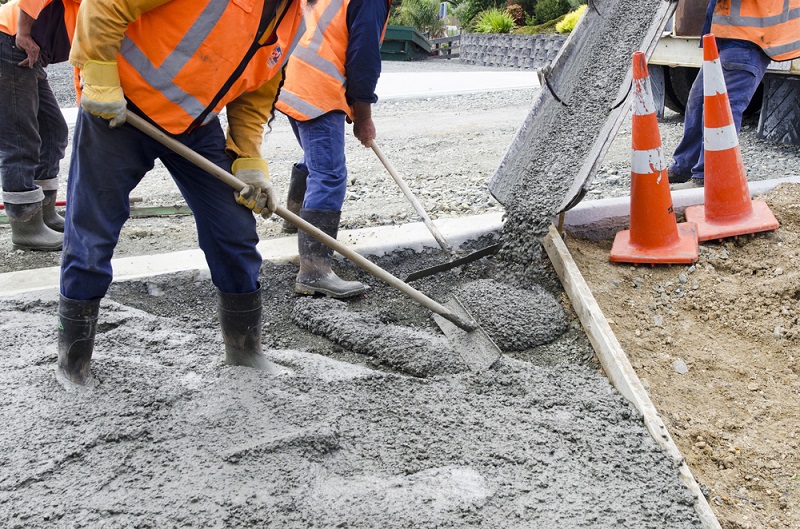 Home Improvement
Home Improvement
How-To Build Durable Outdoor Structures Using Premix Concrete
Have you ever wondered how to create a sturdy pathway that won’t crack under Australia’s hot sun? Or maybe you want to build a long-running retaining wall that stands firm despite heavy rainfall and changing temperatures. If you’ve been searching for a simple and effective way to achieve these goals, you’ve come to the right place. Premix concrete can be your go-to resource when it comes to boosting the lifespan of outdoor projects, especially in the unpredictable Australian climate.
In this blog post, we’ll explore why premix concrete is such a reliable choice. We’ll compare it to on-site mixing, dive into planning tips, and outline the step-by-step process that makes construction straightforward. You’ll discover the best tools and materials to make your project smooth, plus a route to avoiding common pitfalls like cracks and discolouration. Stick with us to learn all about framing your outdoor dreams with the help of premix concrete.
Project Planning and Preparation
Careful planning will save headaches later. This involves evaluating your site, identifying the structure you want to build, and checking legal requirements. In Australia, council approvals might be necessary for larger or more permanent builds, so always research local regulations.
Choosing the Right Outdoor Structure
Ask yourself what your main goal is. A garden path is different from a driveway in terms of load requirements. A retaining wall may need slightly different reinforcements than a simple patio. Matching the structure’s purpose with the correct concrete blend will ensure you’re not overspending or overdesigning.
Calculating Quantities and Budgeting
You can estimate how much premix concrete you need by measuring the length, width, and depth of your pour area. Many suppliers have online calculators to speed this up. Once you have a rough volume figure, you can compare quotes from local suppliers. Budget will also include formwork materials, reinforcement supplies, and any finishing touches like sealant.
Site Assessment and Permits
Look out for slopes, tricky soil conditions, or obstacles like tree roots. These issues might need extra excavation or special techniques. If your construction is bigger—like a large retaining wall—council permits could be mandatory. Always verify with your local authority before proceeding.

Step-by-Step Guide: Building with Premix Concrete
From mixing techniques to finishing touches, this step-by-step guide will help you create strong, attractive structures. Although premix arrives ready to use, it’s crucial to follow good construction practices for a professional result.
Mixing Techniques and Consistency Tips
Since premix is already blended, you typically only need to add water (if at all). Always check the manufacturer’s instructions. A too-watery mix weakens the final product, while an overly dry blend becomes tough to pour or level. If you need a small adjustment, add water gradually and mix thoroughly each time. Overwatering may lead to cracks down the line.
Pouring and Levelling Premix Concrete
Before pouring, oil or dampen your formwork to ensure the concrete doesn’t stick. Pour the premix in one go, if possible, to avoid seams or cold joints. Use a shovel to guide it into corners, then use a screeding board to level out the surface. A rake might help distribute the mix evenly in larger areas.
Finishing Touches for Durability
Once level, let the concrete settle for a few minutes. Then, use a finishing trowel to smooth the surface. For driveways or pathways, adding a non-slip broom finish can boost traction. Remember that your chosen finish can also influence drying time.
Enhancing Durability and Longevity
Outdoor concrete structures face constant challenges from the elements. From scorching temperatures to seasonal rainfall, every climate puts stress on the concrete. By reinforcing areas and adding vital protective layers, you can keep your structures in top shape for years.
Reinforcement Methods
Rebar and steel mesh are the two most common reinforcement types. They help concrete handle tension, which is where cracking often begins. For thin slabs like garden paths, steel mesh may suffice. Larger builds like foundations or driveways might need rebar. Keep in mind that properly spacing rebar or mesh, and ensuring it’s fully embedded, is absolutely key to preventing cracks.
Sealing and Waterproofing in Harsh Australian Climates
Sealing concrete with a commercial-grade product guards against moisture, dirt, and even chemical spills. In parts of Australia prone to flooding or heavy downpours, a penetrating sealant provides additional water resistance. You can apply a waterproofing membrane for retaining walls or areas in constant contact with moisture.

Common Issues and Troubleshooting
Despite your best efforts, snags can occur. From small cracks to discolouration, these issues can impede the look and lifespan of your concrete structure. Luckily, you can often fix problems before they escalate into big repairs.
Identifying and Repairing Minor Cracks
Hairline cracks might appear within the first few weeks, but not all cracks indicate structural failure. Some are shrinkage cracks that form as the concrete cures. If they’re small, you can seal them with a crack filler or epoxy injection. Ensure the surface is clean and dry beforehand. Keep an eye on the crack over time. If it widens significantly, consult a professional.
Addressing Discolouration and Surface Imperfections
Discolouration often comes from uneven curing or inconsistent moisture levels. You can lightly sand the surface or apply a concrete stain to achieve a more uniform colour. For rough or pitted areas, a skim coat or micro-topping may restore smoothness.
Conclusion and Key Takeaways
Concrete work might sound intimidating, but with premix concrete, it becomes a far simpler task. Consistent quality, less guesswork, and ready-to-use convenience give you a head start on any outdoor project. From sturdy retaining walls to elegant patios, each structure can benefit from the stability and durability of premix concrete.
Ultimately, building durable outdoor structures doesn’t have to be a guessing game. By choosing premix concrete, you’re taking a shortcut to reliable results. So, gather your supplies, review your local regulations, and tackle your project with confidence. With the right know-how and a little patience, you’ll have a strong, long-lasting feature you can proudly show off to family and friends.









